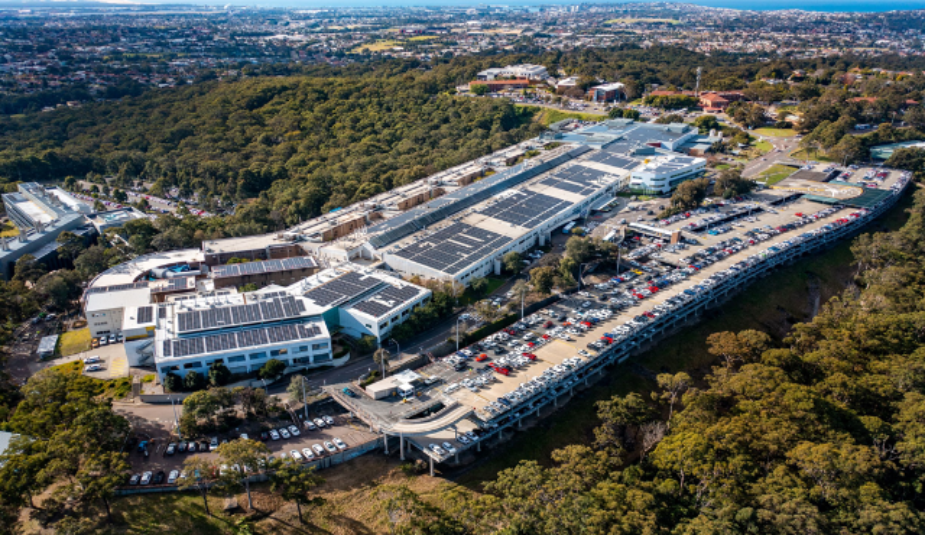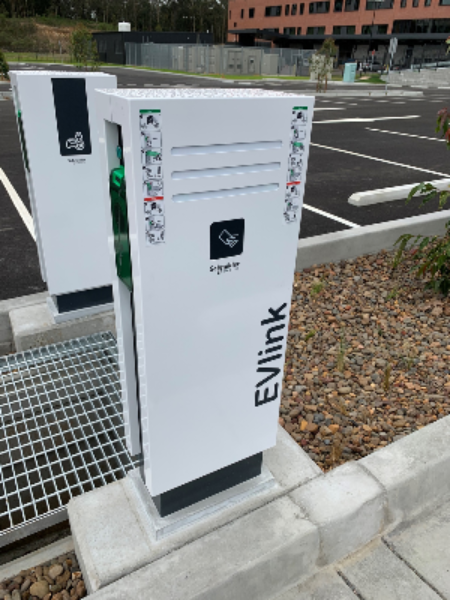NSW Health leads responsible energy use in the Australian public-health sector. The aim of our sustainability programs is net-zero emissions by 2050.
On this page
-
Why NSW Health is lowering its energy consumption
-
Solar energy
-
Batteries to store electricity
-
Replacing old lighting
-
Water sustainability
-
Reducing waste
-
Replacing old equipment
-
Electric Vehicles (EV)
-
Next steps
-
Contact us
 John Hunter Hospital in Newcastle with solar panels on its rooftops
John Hunter Hospital in Newcastle with solar panels on its rooftops
Why NSW Health is lowering its energy consumption
NSW Health operates medical centres, offices and hospitals. There are 228 hospitals that provide healthcare 24 hours a day, with energy needed to power medical equipment, lighting, heating, cooling, laundry and kitchen services.
With a large annual electricity bill of between $100 and $150 million over the past decade, NSW Health has one of the highest energy needs in the NSW Government.
In 2016 NSW Health began its sustainability programs to lower the electricity bill and to reduce the amount of energy needed from the electricity grid. This also resulted in relying less on coal-fired power with high carbon emissions.
The sustainability programs resulted in saving more than $12 million a year and reduced our carbon footprint by about 42,000 tonnes. The money saved will go towards healthcare and aid resilience during times of crisis.
Solar energy
NSW leads the world in harnessing solar energy for public healthcare. NSW health now has a total of nearly 20MW of solar in its network, spread out on previously unused roof space. This covers the equivalent of about 20 soccer fields — or a large-scale solar farm if built as a ground-level system. Almost all our major hospitals now have solar installed or are in the process of installing it.
In 2021, John Hunter Hospital in Newcastle had 5,000 solar panels installed, covering an area of about 12,000 sqm. The panels generate enough electricity each year to power 1,400 homes. It is the largest rooftop solar energy system on a hospital in the world.
There are also about 150 small- to medium-sized solar energy systems on NSW Health buildings throughout the state. More solar panels will be installed on the remaining hospital and health facility rooftops in the years leading up to 2030.
Solar energy has reduced NSW Health’s electricity bill by $4.2 million a year, with a projected savings of $15 million a year by 2030. The program has already reduced carbon emissions by around 33,000 tonnes — the equivalent of removing about 18,000 cars from the road.
 The New Maitland Hospital car park, with roofs covered with solar panels
The New Maitland Hospital car park, with roofs covered with solar panels
Batteries to store electricity
Storing solar energy — and off-peak electricity from the grid — into an onsite battery system is another way to lower NSW Health’s electricity bill.
The batteries at Port Macquarie Hospital, installed in 2021, is Australia’s first large-scale battery system at a hospital. The system allows the hospital to switch to the stored energy in the batteries during peak periods when electricity companies are charging their highest rates.
The batteries can also send electricity back to the grid, selling it back to the energy companies during peak periods to generate revenue.
 Port Macquarie Hospital's large-scale battery installation
Port Macquarie Hospital's large-scale battery installation
 New Maitland Hospital's electric vehicle (EV) charging station
New Maitland Hospital's electric vehicle (EV) charging station
Replacing old lighting
Replacing lights in NSW Health buildings with LED lighting is one of the best ways to rapidly reduce carbon emissions. LED lights are very energy-efficient, using at least 75% less energy than conventional light bulbs. Replacing the millions of non-LED bulbs across NSW Health’s facilities will:
- cut thousands of tonnes of carbon emissions
- reduce more than 65 GWh a year on energy usage equal to the energy used by 12,000 houses
- lower electricity bills by tens of millions of dollars.
NSW Health aims to have nearly all lights converted to LED by 2030.
 New Maitland Hospital car park, with solar roofs (ground level view).
New Maitland Hospital car park, with solar roofs (ground level view).
Water sustainability
Water is a finite resource in Australia. NSW Health is preparing for future water shortages by only buying machines and having building facilities that are water efficient.
Anything that uses water — like appliances, shower heads, taps and toilets — must comply with the
Water Efficiency Labelling Scheme purchasing targets for government. For example, appliances such as washing machines and dishwashers must have a minimum 4-star rating before being considered for purchase.
The target for all NSW Health office buildings is a minimum of 4-star rating according to the
NABERS rating.
Reducing waste
NSW Health produces around 20,000 tonnes of waste every year. Most of this is medical waste and must be disposed of properly, but more than 1,300 tonnes of waste diverted from landfills in 2021.
To divert more waste from landfills, NSW Health wants waste to be managed with more environmental and financial goals in mind. A five-year plan towards sustainable waste management was created in 2021.
Three main goals of the plan are:
- diverting 80% of waste away from landfill
- ensure traceability throughout the waste value chain at individual sites and understand if more waste can be diverted from landfills
- increase efforts to avoid landifls, and reduce, reuse, recycle.
Replacing old equipment
NSW Health spends tens of millions of dollars each year on replacing equipment that has reached its end of life. This is part of standard operations management at many Health facilities.
Under the sustainability program, we now replace equipment with a model that is more energy efficient. This lowers our carbon emissions output and contributes to our sustainability goals.
Electric vehicles (EV)
The NSW Government is making a push towards using electric vehicles by introducing
subsidies, rebates and incentives.
NSW Health is aligning with the targets set by the
NSW Government’s Electric Vehicle Strategy by:
- ensuring 50% of new passenger vehicles purchased are electric vehicles (EVs) by 2025
- ensuring 100% of new passenger vehicles purchased are EVs by 2030.
NSW Health is supporting the targets by:
- installing EV charging stations at new facilities, where workable
- fitting EVs with technology that allows staff to schedule or book its use.
Next steps
Our next steps towards long-term low-carbon healthcare include:
- pilot programs for large-scale batteries at hospitals — the first in Australia
- switching from gas to electricity
- installing new hospitals with solar panels and EV charging stations.
More information
Net zero in local health districts, specialty networks and health organisations.
Contact us
Contact NSW Health's Sustainability team via email
MOH-sustainability@health.nsw.gov.au.
